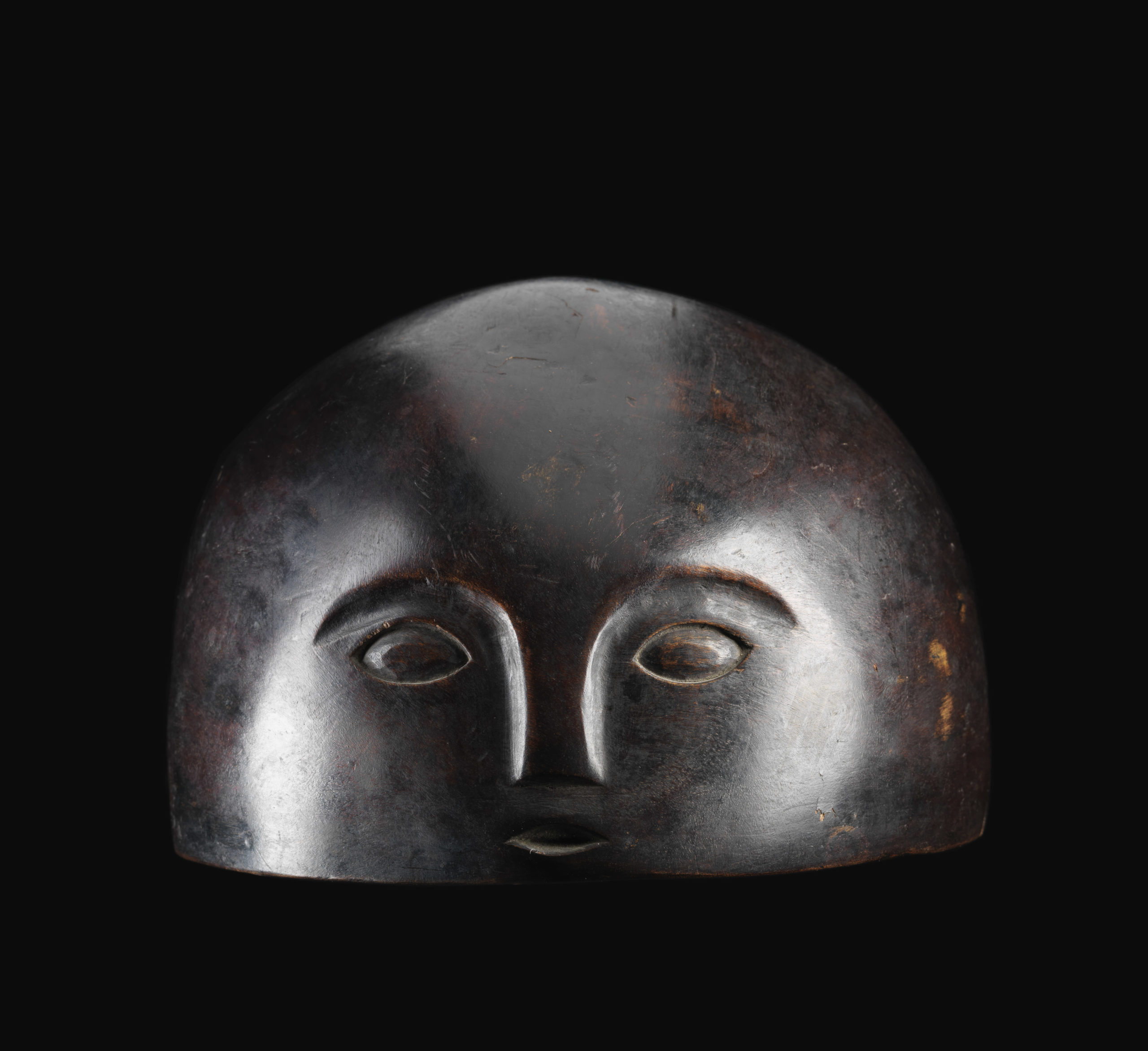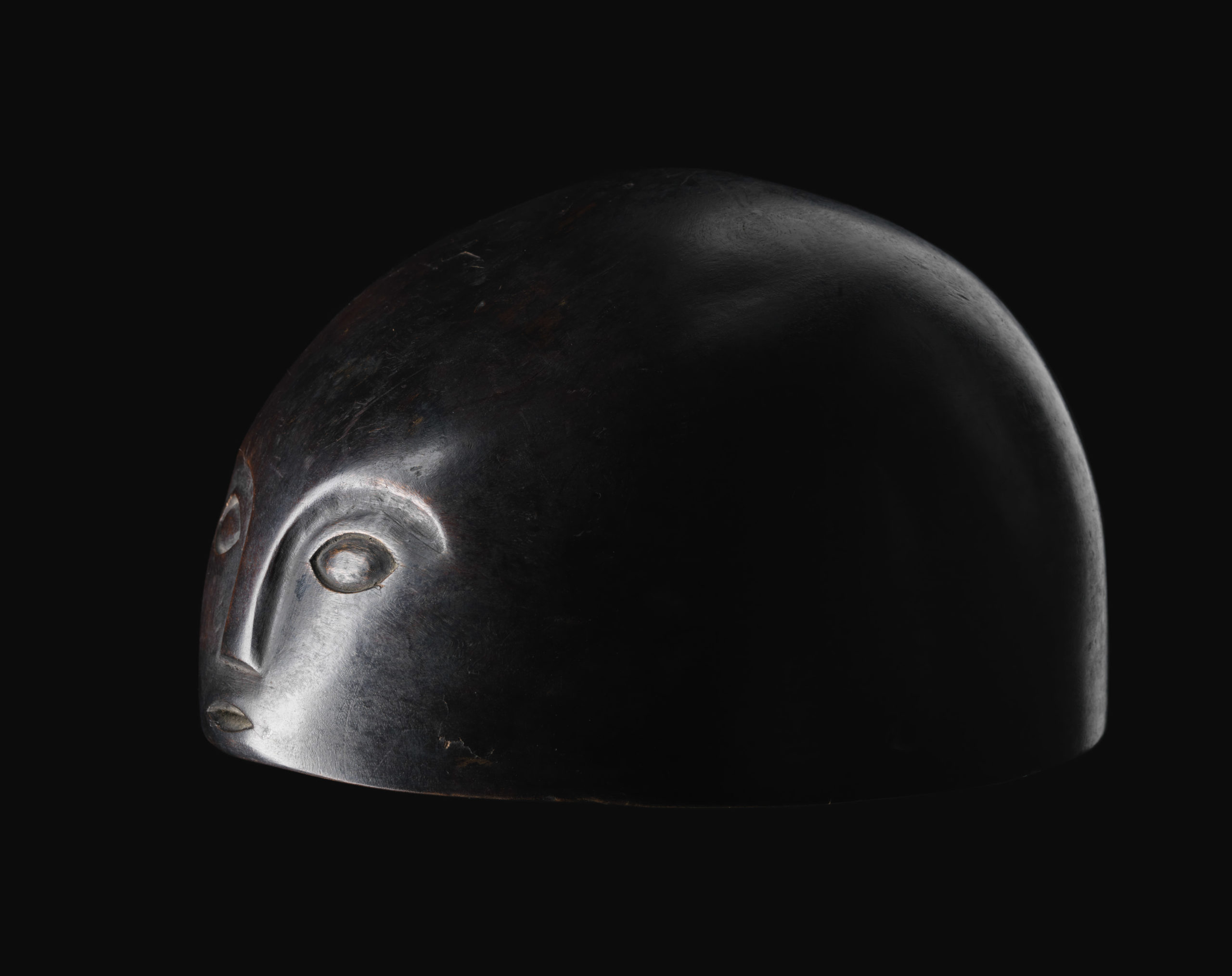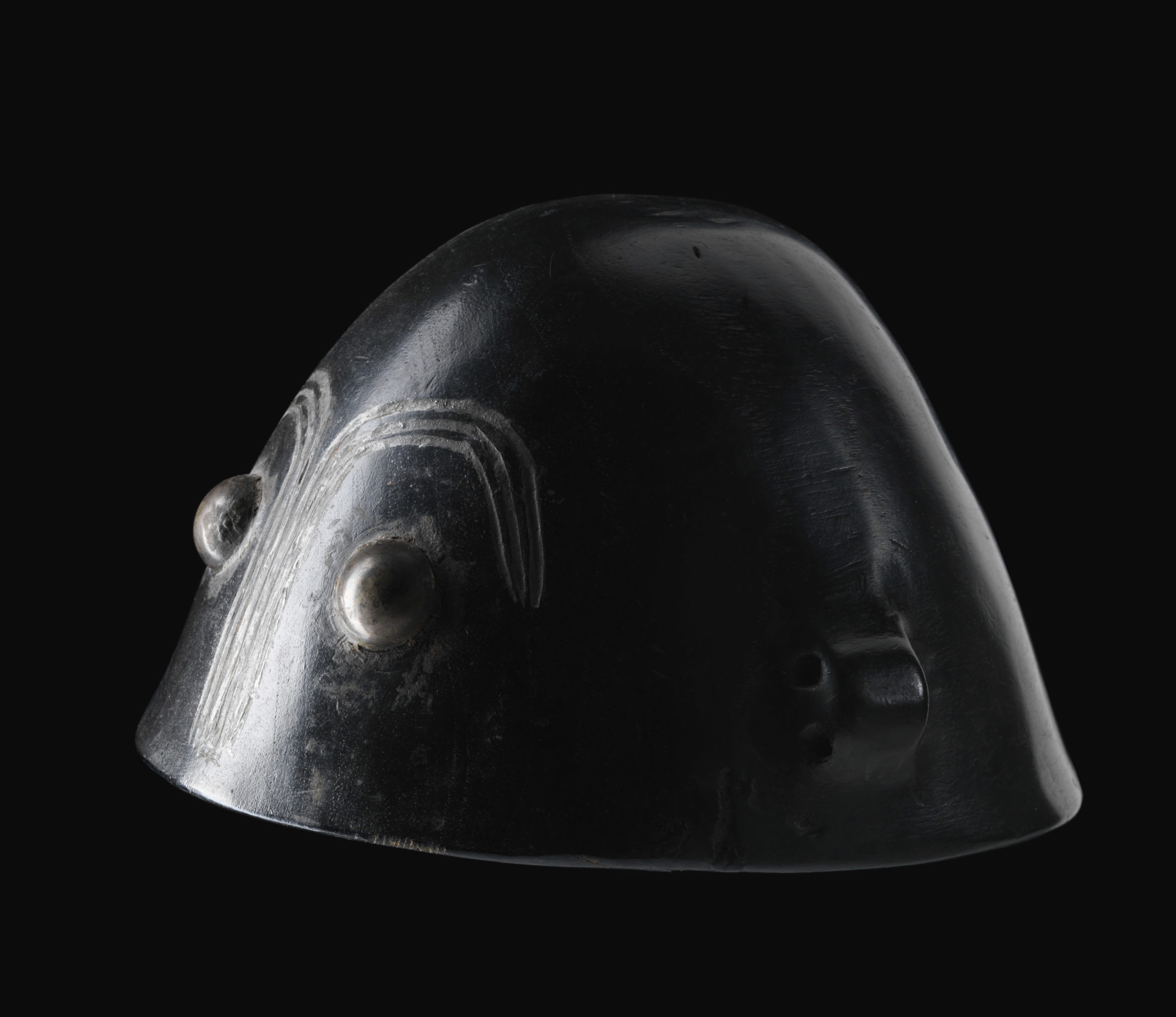Hunting cap “oklop”
These helmets are carved from a piece of wood and painted with black lacquer. In the example below, the eyes were highlighted with pewter inlays. The incised lines can also be found in tattoos of the upper body of people from the Bontoc region.
The small holes on the protruding “ears” were used to attach small strings of pearls as additional decoration.
A rare category of objects are the wooden “hunting caps” oklop of Igorot, sometimes called “helmets”. They are made of one piece of light or medium hard wood and usually have a dark artificial patina. They often show hints of a human face, mostly reduced to hinted eyes and a mouth slit. Sometimes they show a zoomorphic “emblem” which is either integrally carved or pewter or brass pinned on. They cover the upper part of the head and have little support; the protective function against spear blows and bolo blows is very questionable.
Headdresses of this kind, whether they are based on the human face or unadorned, have recently been regarded as ritual headdresses of hunters, as can be seen for example in the Barlig region of the Central Cordilleras. It may be assumed that here the jewellery of the successful head hunter was transferred to the hunting situation, because caps are well known and well vouched for by many Austronesian ethnic groups as an emblem of the head hunter. In former times oklop were worn by hunters at dances to remind of a successful hunt. Nowadays, however, wild animals are almost extinct, and the cap is worn at cyclical festivals and used as a ritual drinking vessel, another indication of the importance of the skull cap or skull cup, as adopted from headhunting times. It is noteworthy that the caps show pewter applications, as pewter is often a very prestigious material in South East Asia and is always used in connection with successful warfare. This is probably due to the Bronze Age importance of tin for the manufacture of weapons, which made copper a metal suitable for weapons in the almost alchemical-magical processes of alloying.
It can be assumed that the cap is based on skullcaps (skullcaps) of slain enemies, which were possibly worn by successful warriors in former times. At least this is suggested by Chinese sources describing the customs of Han-temporal Dian societies and south-western Chinese “barbarian peoples” in the periphery of the Central Empire. Occasionally the Igorot also wear helmets that go back to European helmet forms, but these have a completely different habitus.
| Object | Hunting cap “oklop” |
| Culture | Northern Philippines, Luzon, Bontoc (?) |
| Time | 19th century |
| Dimensions | Top diameter 22 cm, h 13 cm
Below diameter 21 cm, h 13 cm |
| Material | Wood, black lacquer, metal (tin) |







